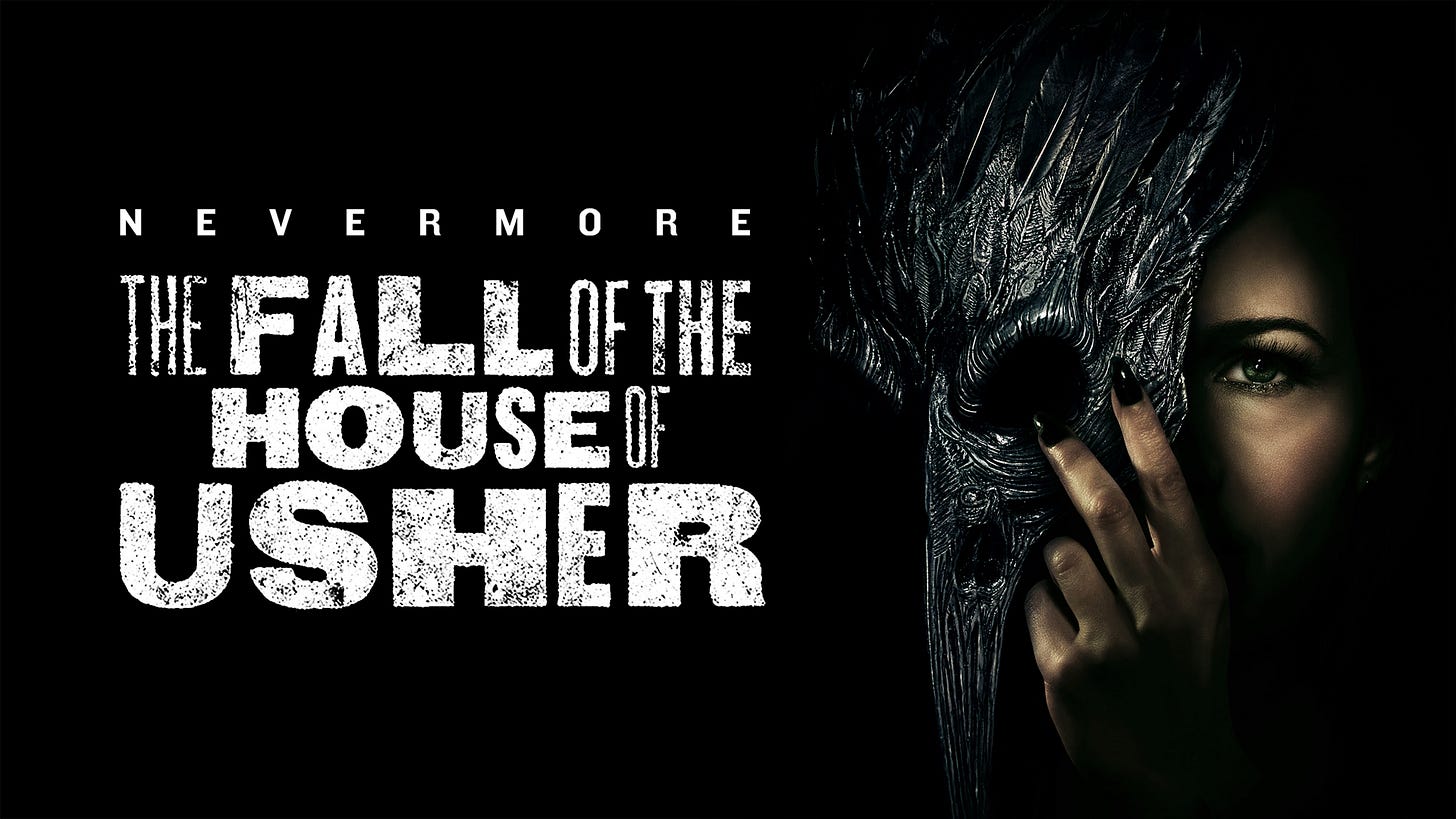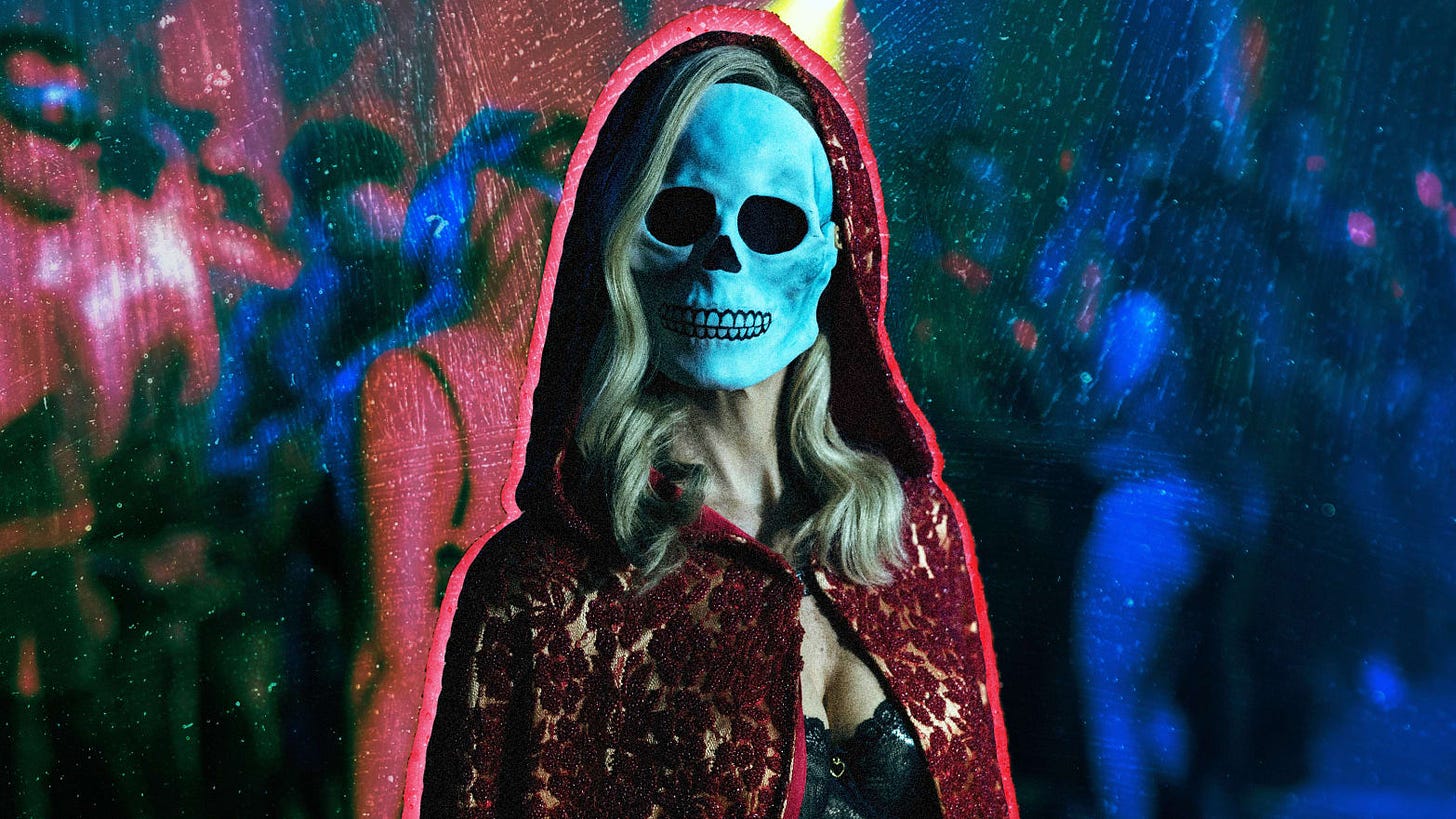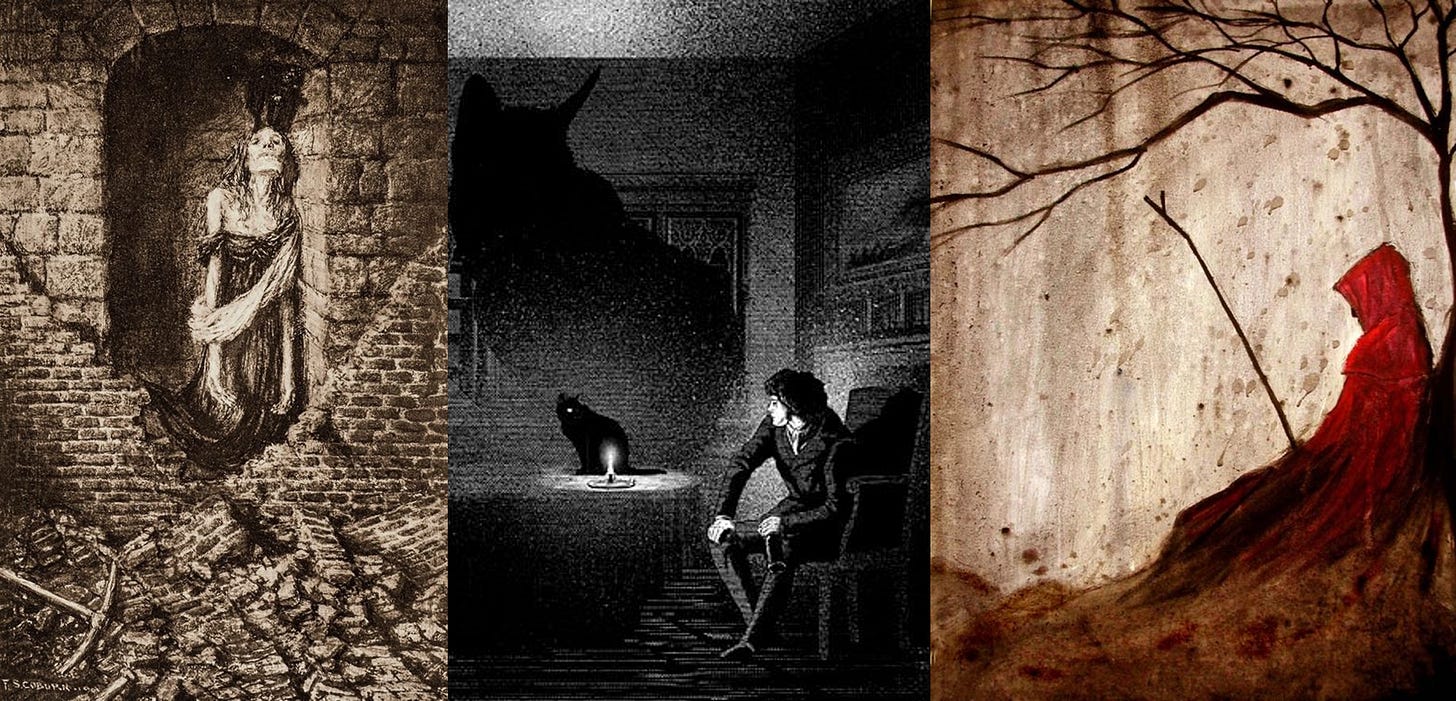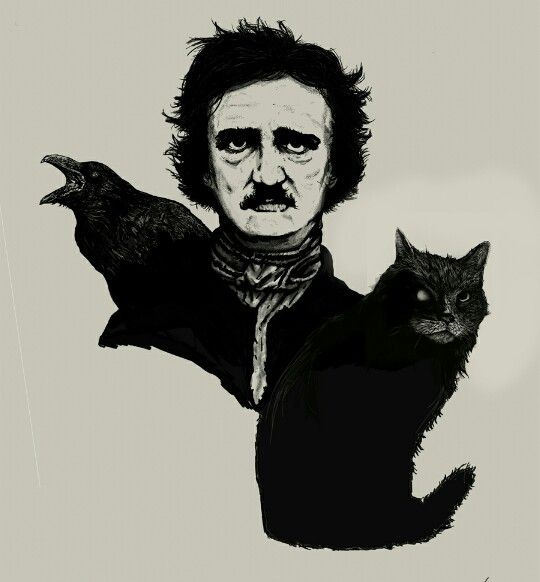[#12] The Fall of the House of Usher: The Poe Cinematic Universe
By Devki Pande
The Fall of the House of Usher is the third instalment in the Haunting of Hill House anthology created by Mike Flanagan. And it has all his favourite touches, which have become pillars of this series – a family, cursed. A large, crumbling mansion. And secrets of the past. However, this work of Flanagan’s, is his most ambitious and therefore also polarizing.
Or should I say poe-larizing?
The Fall of the Usher is originally a supernatural horror story by Edgar Allan Poe, in which an unnamed narrator is seated opposite Roderick Usher, the last of the Usher family. Madeline, his sister, is prone to death-like trances. The show, however, is much more expansive than just the Usher family. All of Poe's stories, poems and motifs are woven together to form the world of the House of Usher, making it the Poe Cinematic Universe.
Each episode of The Fall of the House of the Usher is based on one of Poe’s stories, but interpreted in a modern way. Like the Tell-Tale Heart, the Black Cat, and The Masque of Red Death; each episode, titled after one of Poe’s works, is how an Usher family member dies. And so when death comes for each of the Ushers, by mid-point, there are no surprises left.
But this is because the show didn’t do more with the easter eggs of Poe that it included. For example – in the show, Roderick Usher’s wife is Annabell Lee. In the famous eponymous poem, Annabell Lee died young, “her highborn kinsmen came, and bore her away from me, to shut her up in a sepulchre, by a kingdom by the sea.” This devastatingly haunting poem has been interpreted in multiple ways in many fantasy books – like Cassandra Clare’s book, Lady Midnight. But in this show, in this Poe Cinematic Universe, there was no modern interpretation of this story or this love - to the point that Roderick Usher’s wife, Annabell Lee could have been called anything else. We never learn how Annabell dies, who these high-born kinsmen are, or whether her grave really lies somewhere in the sea.
Even the purpose of naming the granddaughter Lenore, the only pure-of-heart member of the Usher family, "it shall clasp a sainted maiden who the angels name Lenore," seemed so that Roderick Usher could mourn at her deathbed, like in his poem, The Raven. The maiden Lenore appears in several of Poe’s works, described as the "queenliest dead who died ever so young." Just like Fall of the House of Usher was interpreted in a modern crime family way, these poems which are bread-crumbed throughout the episodes, could have been embedded more firmly into the story. Apart from the Tell-Tale Heart, the rest of the stories and how they connected to an Usher's death seemed expedient. Especially the bit where Roderick and Madeline wall up Rufus Griswold alive, only so that the ‘buried alive’ element - a famous Poe plot point - is included in the story.
But the biggest mystery of the show was figuring out who Verna is – the creature the Ushers strike a bargain with on the New Year of 1980 since this is what is not made explicitly clear.
Verna’s first appearance in the show is in a red cloak, with a skull mask - the very image of death roaming the halls in The Masque of Red Death.
What becomes clear eventually is that Verna is an immortal cosmic entity who has been around since antiquity, and the deal that the Ushers strike with her is a Faustian bargain. Verna references Papyrus and calls Madeline ‘Cleopatra’, which makes me think that she is perhaps an Ancient Egyptian entity – which could be consistent with the Black Cat episode and the Gold Bug – which is shaped strangely enough like a scarab beetle, which was sacred in Ancient Egypt as symbols of resurrection. In the final scene of the show, Verna lays a feather on Lenore’s grave - and in the Egyptian afterlife, a heart was weighed against a feather to judge its purity. If the heart was lighter than the feather, its bearer would go to heaven. (Lenore is the sainted maiden of Poe’s work.) Perhaps an episode from Verna’s perspective could have provided a more zoomed out view of this universe. Clearly she operates as a being who collects lives, who places options before humans, trying to test their depravity, and only resurfaces in order to collect. And yet - there are some acts too dastardly for even her to remain a witness.
So who is Verna, then? The name ‘Verna’ is an anagram of Raven, which is one of the most enduring and famous of Poe's motifs and, in many ways, representative of Poe himself. This made me think that Verna – the creature of deals and consequence, the one pulling the strings all along in the show, is Poe himself. He writes the rules of the world, he decides who to punish.
Short Story collections as Universes
The show has been successful in taking all of Poe’s work and making it into a whole world. In doing so, it has set material free from constraints. Because Poe didn’t write novels. He wrote only short fiction and poems. Conventionally, his work doesn’t check boxes of ‘adaptation material.’ But Flanagan has woven together Poe’s motifs, characters, and short stories into the saga of the fictionalised Sackler dynasty, and created an entire world which holds fast. In Fall of the House of Usher, the gothic lives on in the modern age.
Which throws open the world of screen to non-novelist writers. The good short story collections are wonderfully cohesive pieces of literature and operate out of a theme or question the writer is trying to answer. Such short story collections are universes of their own, chock full of characters, plots, twists and motifs - but all dealing with similar themes and questions, which is what makes them excellent candidates for linear, episodic visual adaptations.
For ex: Laura Vandenberg's splendid work, What the World Will Look Like When All the Water Leaves Us, operates at the crossroads of the mythic and mundane. Her Body and Other Parties by Carmen Machado is a delightfully chilly work of short fiction that could be its own universe - it’s already in development as a Black Mirror type show. Or Raymond Carver’s short stories could be reinterpreted as a Universe of his own – he of the delightful plot twists. St Lucy's Home for Girls Raised by Wolves is a collection of supernatural fairytale-esque stories by Karen Russel, in which supernatural creatures made famous in the 18th century must grapple with their reduced lives in the Modern Age.
It’s not only novels that could be adapted to the screen. It could also be a poem, it could be a piece of short fiction, or it could be all of it together. As it stands, Fall of the House of Usher has multiple easter-eggs - Auguste Dupin, the black lawyer, is actually a Poe invented detective character, who in several short stories, renders important services to the Parisian police by unraveling unsolvable mysteries. That’s the thing - every name, every statue, everything in this show means something, is a throw-back to a clue. Poe’s work has even inspired the decor of the Usher manor, like the bust of Pallas Athena on the mantelpiece that a raven perches upon - “ and the Raven, never flitting, still is sitting, still is sitting, On the pallid bust of Pallas just above my chamber door.”
Only avid Poe readers will be able to appreciate what Flanagan has tried to do. But for the layman, I wish that these connections had been explored more, so that they became more than just name drops.






